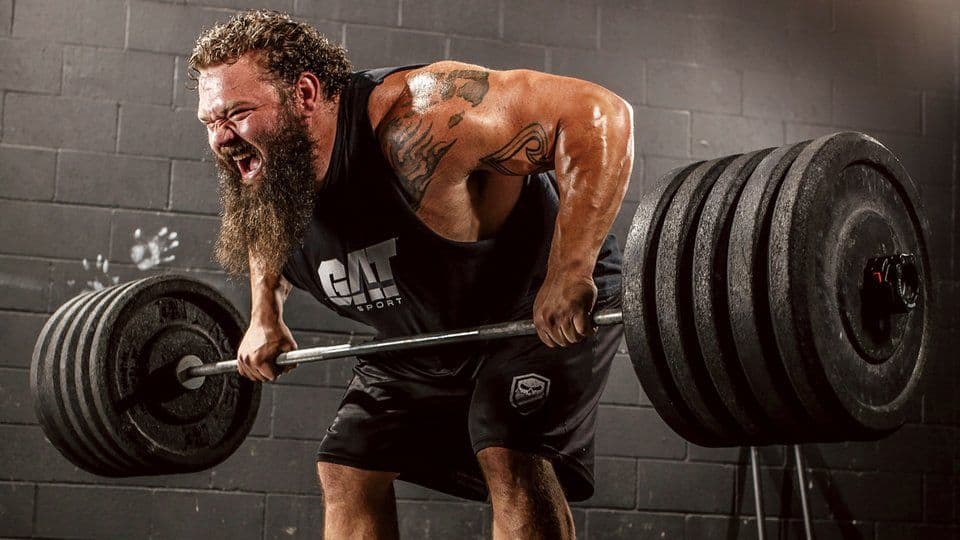The Swole 3×5 Workout Routine
If you have been reading weightlifting materials for any length of time, you have probably heard of 5×5 training. It has worked for many trainees. We folks at Project Swole even made excellent progress on a 5×5 program. But with all this 5×5 hype, has anyone stopped thinking there might be an even more efficient way to train? You might want to take a moment to learn about The Swole 3×5 workout.
In my experience, at least for trained athletes, there are benefits to a Swole 3×5 workout routine which include added volume for accessory movements, core training, and conditioning due to the slightly lower workload.
The Goals of The Swole 3×5 Workout

This can be a powerlifting routine, a bodybuilding routine, or a conditioning routine. Sports athletes can use it, aspiring weight lifters can do it, and beginners, novices, and advanced trainers can use it.
The Swole 3×5 workout approach to strength training is a free weight routine designed to get you back into shape, give you a break from a more mundane routine, or blast you through a plateau.
Beginners
Learn how to put together an exercise program the right way. Learn all the basic compound exercises, as well as some variations thereof. Start to build a foundation for future sports or weightlifting success.
Experienced Weightlifters
Break out of a rut with this program. Blast through plateaus. Relieve yourself from training program boredom. Once you switch to a Swole 3×5 workout you might never go back.
Benefits
- Increased strength and power.
- Reduced body fat.
- Increased muscle density and some size.
- Better health through conditioning.
- Increased flexibility and energy.
To create this new program, I am going to base the workout strategy on 5 postulates.
- The frequency of training any given muscle is directly proportional to observed muscle adaptation as a result of applied micro-trauma within the bounds of overtraining. That is, the more often a muscle is trained, the more strength and size you will be rewarded with.
- The speed at which a muscle can recover from trauma is directly proportional to the amount of trauma inflicted upon it whether or not additional recovery methods are used. If you can train a muscle hard, but not hard enough to inflict massive trauma, it will heal quicker.
- Compound, free-weight exercises are the best exercises for increased strength, power, speed, and size. This is what will build the basic foundation of any weightlifter’s physique.
- Combining exercises from antagonistic or unrelated muscle groups into a super-set will allow us to complete more overall volume in any period, while not detracting from the output capacity of either muscle group.
- A body will cease to benefit from neurologically intensive resistance training after 45 minutes from the start of training. This is, of course, dependent on individual physiology.
Therefore, the basic premise is that we are going to try to train each muscle group at each workout. We are going to try to minimize trauma to each muscle, while still inflicting enough stress to cause an adaptation. To avoid overtraining we will be sure to take every other day off with the option of taking off each weekend in full.
Pre-Workout and Warming Up
About an hour before your workout, take any supplements you might be using at the time.
About fifteen minutes before your workout, sip 1/2 a serving of Biotest Surge or any other pre/post-workout recovery drink with dextrose and protein. Understanding what pre-workouts can and can’t do for you is crucial, as it helps you use them effectively to enhance your performance. If you don’t have any pre-workout supplements at the moment, have a quick simple protein shake, then drink some Gatorade or Powerade – sip on this during the workout.
Warm up for about 5 minutes. The elliptical is great for this, or you can jump rope, do some burpees and pushups, swing some 10 lbs plates around, or whatever you’re comfortable with.
Set Scheme and Rest Periods
For the first set of each exercise, you want to start with 1 warm-up set, which means you’ll be doing 4 sets of each exercise, as you see fit. If you are already very warm and think you can bypass the warm-up set, do so at your own risk.
Rest only minimally between the two exercises in a super-set.
Rest for 60-90 seconds after the completion of a full superset or a single set.
Rep Scheme and Breathing
You will be executing 3 work sets for each exercise. For each of these sets, you should complete 5 reps. Each rep should be controlled on the negative or eccentric portion, and explosive on the positive or concentric portion. At no time should you lose control of the weight or break proper form.
Inhale on eccentric, then hold your breath for 1/2 of the concentric and exhale once you’ve made it past the sticking point.
Weight Scheme and Progression
To choose your initial starting weight, choose a weight with which you can barely perform 3 sets of 5 reps. You might have to start off with just the bar.
Warm up with light weights. Then increase to your chosen working weight and use that same weight on the final three work sets. If you don’t hit your 5 rep goal, oh well, suck it up and finish the workout. Everyone has a bad day once in a while.
As long as you hit your 3×5 goal the previous time you performed the exercise, always add at least 5 pounds to your working weight. This is called linear progression.
DO NOT do forced or negative reps if possible. If you have a spotter, request that the spotter not touch the bar or help you at all unless necessary. If the spotter helps you through a rep, then the set is done. The goal is to avoid forced or negative reps by completing each 3×5 without any help. Even still, it pays to have a spotter handy on some exercises.
The Program: Days 1-7
- Barbell Back Squat 3×5
Incline Barbell Bench Press 3×5
Deadlift 3×5
ss1 Pull-Ups, weighted if possible, assisted if necessary 3×5
ss2 Standing Calf Raise 3×5
ss1 Dips, weighted if possible, assisted if necessary 3×5
ss2 Lying Sit Ups, weighted if possible 3×5 - Off or light aerobics to increase blood flow.
- Flat Barbell Bench Press 3×5
Bent Over Barbell Rows 3×5
Standing Overhead Press 3×5
ss1 Stiff Leg Deadlift 3×5
ss2 Seated Calf Raise 3×5
ss1 Hammer Curls 3×5
ss2 Lying Butterfly Kicks with Hands Under Buttocks 3x to failure - Off or light aerobics to increase blood flow.
- Deadlift 3×5
Close Grip Barbell Bench Press 3×5
Barbell Back Squat 3×5
Chin-Ups, weighted if possible, assisted if necessary 3×5
ss1 One Leg Calf Raise Holding Dumbbell 3×5
ss2 Russian Twist with Medicine Ball or Plate 3×5 - Off or light aerobics to increase blood flow.
- Off or start on day 1.
Try not to lift heavy for more than 45 minutes. This workout is designed to get you in and out in under an hour. You can do it.
You should stay on this program for no more time than it takes to start to plateau. Once you are not able to add weight to any exercises for 2 weeks in a row, it’s time to change exercises. You can still use the same general idea but change to a different exercise for the muscle that has plateaued.
Nutrition
Be sure to increase your protein when starting a demanding workout routine. Most experienced athletes and trainers have come to accept nutrition as 85% of the equation, whether you’re gaining mass or dropping fat. We’ll need to examine the full spectrum of macronutrient consumption to maximize the effectiveness of our nutrition habits.
Learn a bit more about nutrition with these helpful posts:
If you try the Swole 3×5 workout please leave us a note on social media or here in the comments to let us know how the routine worked for you.
Recovery
Once you’ve adopted an intense workout program like the Swole 3×5, you will want to focus some time and energy on recovery to minimize soreness and maximize gains. Recovery starts with nutrition. Eating or drinking protein-packed meals and snacks starts your post-workout road to recovery.
A few other recovery techniques that are useful to employ include massage therapy – in particular deep tissue or sports massage, physical therapy such as you would get from ProTouch Physical Therapy Clinic to help with injuries and work out problem areas, dynamic stretching and/or yoga to facilitate blood flow and loosen up tight joints, and a cold plunge or ice bath – a recent fad that many athletes swear by to minimize inflammation and soreness.
Tags: 3×5, 5×5, exercise, fitness, gain muscle, health, muscle gain, routine, strength, workout routine
You can leave a response, or trackback from your own site.
